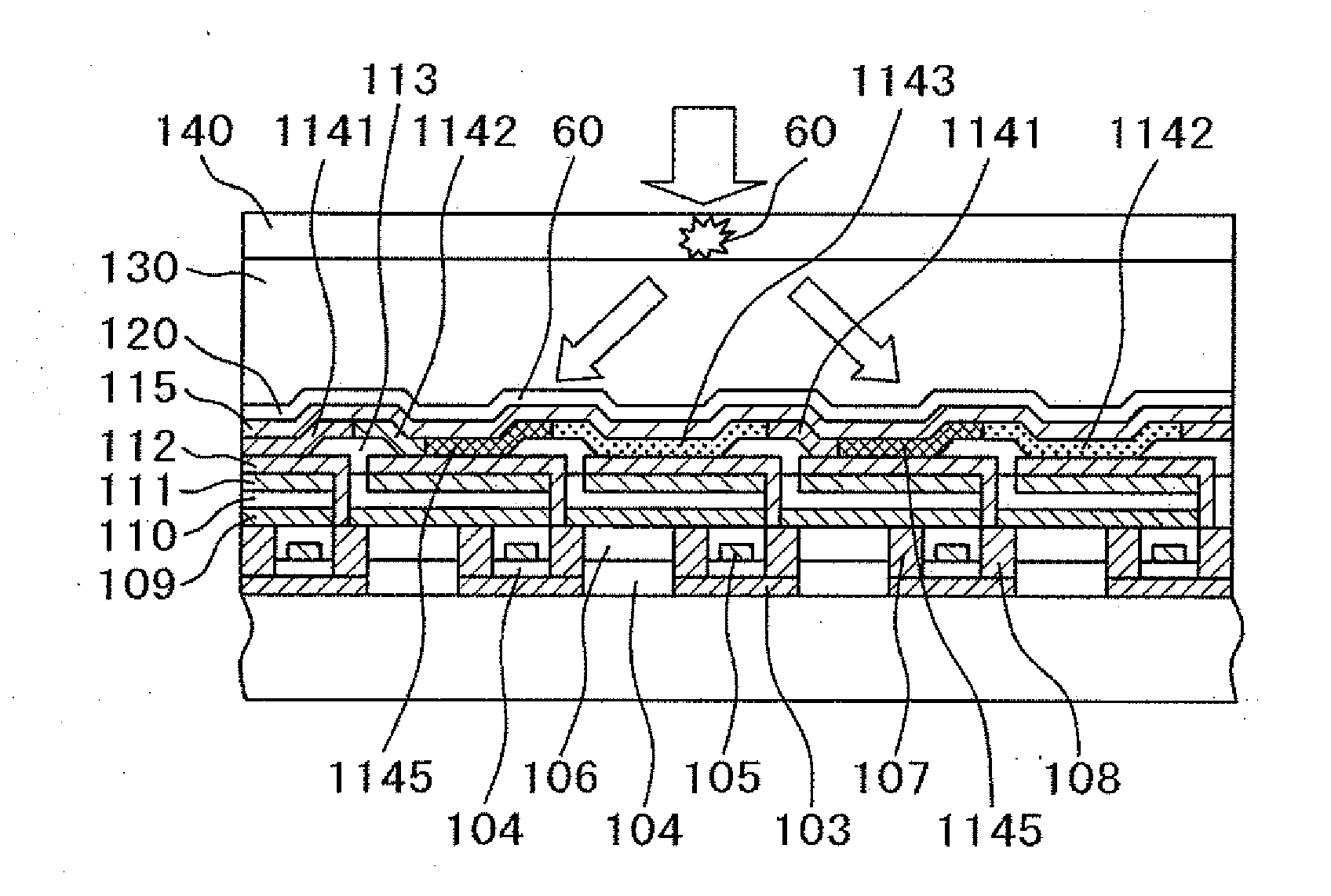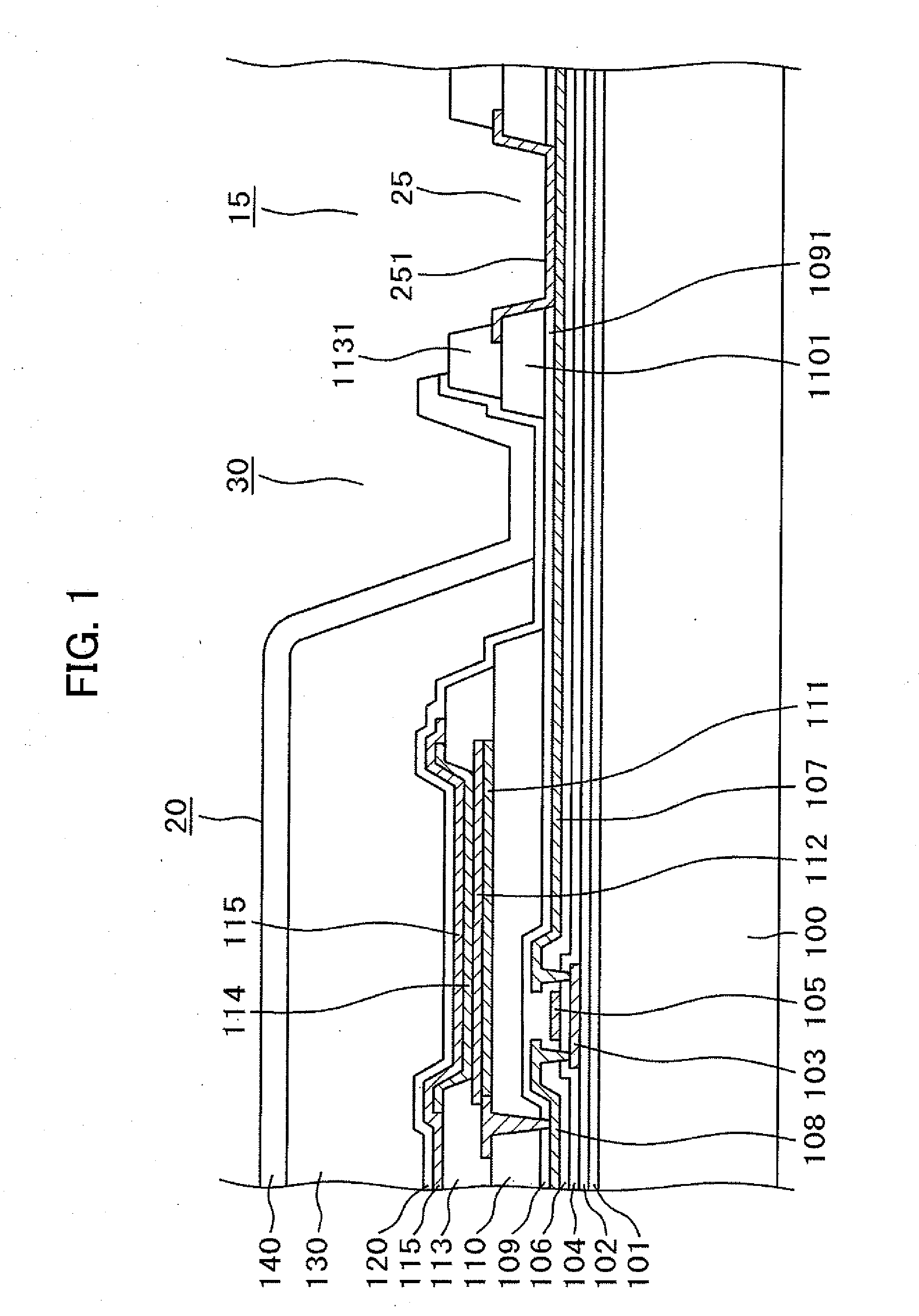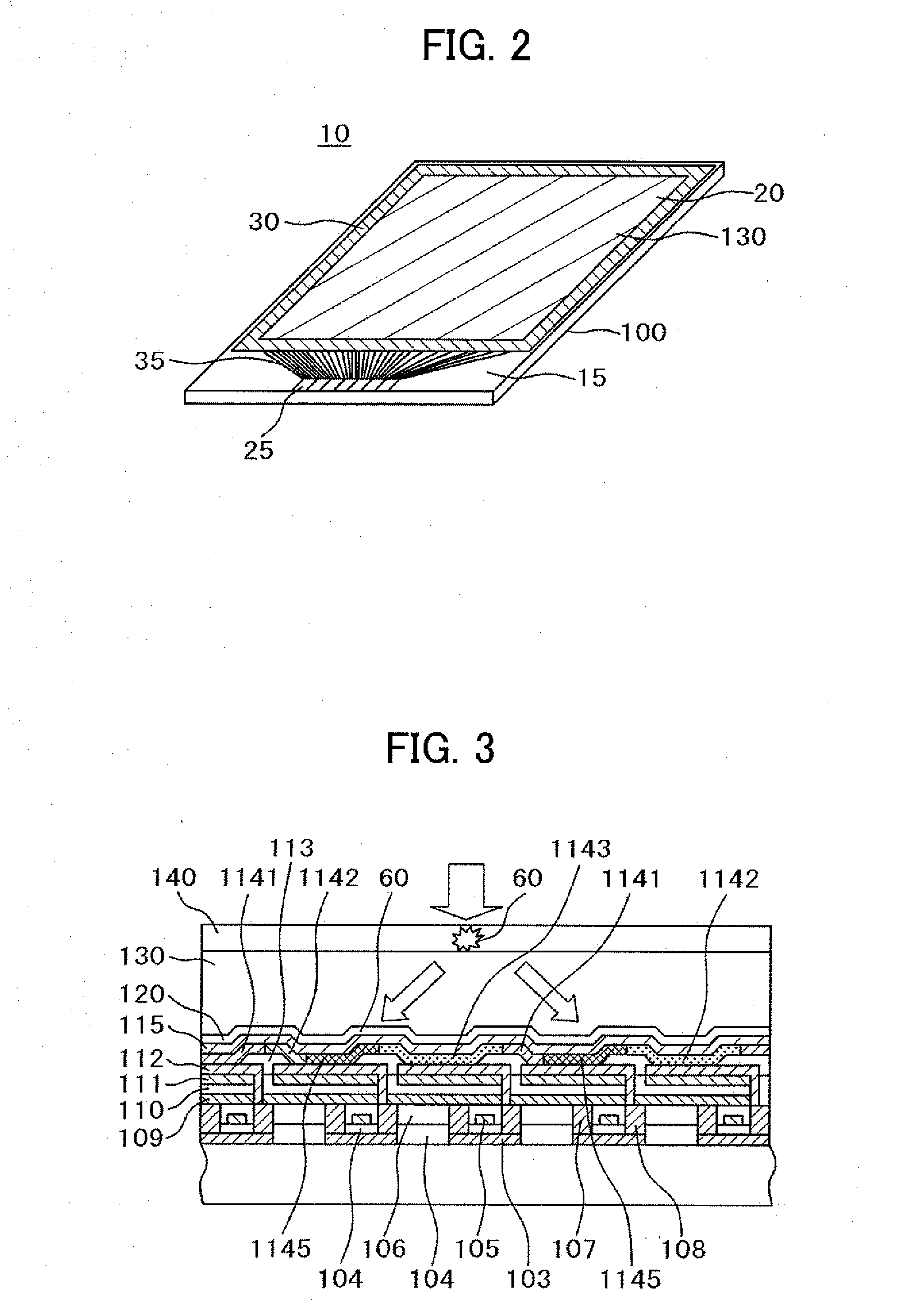Organic electroluminescence display device
a display device and electroluminescent technology, applied in semiconductor devices, electrical devices, instruments, etc., can solve the problems of difficult control of the gap between the device substrate and the sealing substrate, contamination of organic el materials, and defects in images, so as to prevent defective products and increase production yields
- Summary
- Abstract
- Description
- Claims
- Application Information
AI Technical Summary
Benefits of technology
Problems solved by technology
Method used
Image
Examples
first embodiment
[0039]FIG. 2 is a perspective view of an organic EL display device 10 to which the present invention is applied. In FIG. 2, a display area 20 and a terminal area 15 are formed on a device substrate 100 of glass. The display area 20 is covered by an organic flattening film 130. The organic flattening film 130 and the display area 20 are substantially equal to each other. A peripheral sealing area 30, which is covered by an inorganic passivation film, is formed in the periphery of the display area 20 in which the organic flattening film 130 is not present. The organic film is permeable to the water, so that the organic flattening film 130 is removed in the peripheral sealing area 30.
[0040]The terminal area 15 is formed on the outside of the display area 20. In the terminal area 15, leader lines 35 of scan lines, image signal lines, and power lines are formed and connected to a terminal portion 25 of the terminal area 15. Scan signals, image signals, power, and the like, are supplied f...
second embodiment
[0074]FIG. 7 shows a second embodiment. The second embodiment is different from the first embodiment in that the organic EL layer 114 is protected from water by a laminate film 50, instead of using the organic flattening film 130. In FIG. 7, the second inorganic passivation film 120 is formed on the upper electrode 115 of the organic EL layer 114, which is the same as the configuration of the first embodiment. However, in the second embodiment, the laminate film 50 is formed on the second inorganic passivation film 120. Then, the third inorganic passivation film 140 is formed on the laminate film 50. The laminate film 50 includes a laminate film base material 51 and a thermoplastic adhesive material 52.
[0075]The third inorganic passivation film 140 is formed on the laminate film 50. At this time, an SiN film of about 1 μm is applied by a low temperature CVD. The surface of the laminate film 50 is very flat with few bubbles or other defects. The number of defects in the third inorgan...
third embodiment
[0078]FIG. 8 is a cross-sectional view showing a third embodiment of the present invention. FIG. 8 is a cross-sectional view, similar to FIG. 1, from the end portion of the display area 20, to the peripheral sealing area 30 and the terminal area 15. In FIG. 8, the second inorganic passivation film 120 is formed on the upper electrode 115 of the organic EL display 114, which is the same as the first embodiment. In the third embodiment, the laminate film 50 described in the second embodiment is laminated on the second inorganic passivation film 120. Further, in the third embodiment, a barrier layer 53 for blocking water is provided by co-depositing alumina and silica on a surface of the laminate film base material 51. Then, the third inorganic passivation film 140 is formed on the barrier layer 53 by a low temperature CVD.
[0079]As described above, in this embodiment, the barrier layer 53 is provided on the surface of the laminate film 50, so that little water is transmitted through th...
PUM
 Login to View More
Login to View More Abstract
Description
Claims
Application Information
 Login to View More
Login to View More - R&D
- Intellectual Property
- Life Sciences
- Materials
- Tech Scout
- Unparalleled Data Quality
- Higher Quality Content
- 60% Fewer Hallucinations
Browse by: Latest US Patents, China's latest patents, Technical Efficacy Thesaurus, Application Domain, Technology Topic, Popular Technical Reports.
© 2025 PatSnap. All rights reserved.Legal|Privacy policy|Modern Slavery Act Transparency Statement|Sitemap|About US| Contact US: help@patsnap.com



